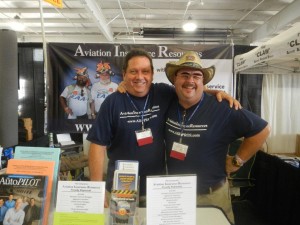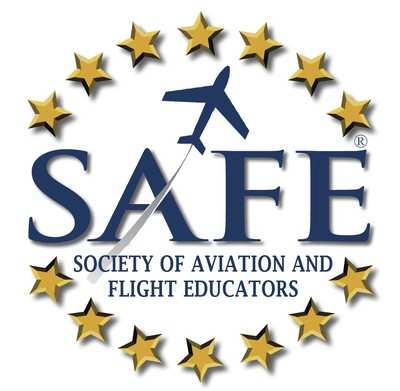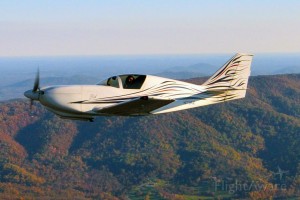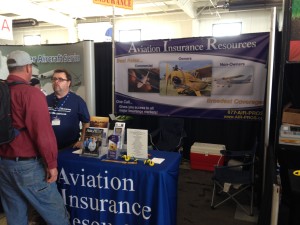Posts Tagged ‘Aviation Insurance Resources’
Aero News Network: SAFE CFI Insurance Now Quoted, Bound Instantly
Thursday, October 30th, 2014Aviation Insurance Resources to Attend Midwest LSA Expo
Wednesday, September 3rd, 2014For three days each year, Mt. Vernon Outland Airport (MVN) in Mt. Vernon, IL becomes the mecca for light sport aircraft (LSA). September 4th through 6th marks the dates for the 6th annual Plane & Pilot Midwest LSA Expo inviting sport pilots, LSA manufacturers and aviation enthusiasts alike to enjoy informative workshops, light sport related exhibitors and enjoyable airport nightlife! Most of all, the entire event is FREE to attend and parking for cars and aircraft are free as well!
Aviation Insurance Resources (AIR) is delighted to attend this small but mighty expo again. You can meet AIR agent and pilot Gregg Ellsworth inside the expo exhibitor area.
“I enjoy exhibiting at the Midwest LSA Expo in Mt Vernon, IL. I was the first exhibitor to register for this event and I have attended every year. The Airport Manager, Staff, Volunteers, and community are GREAT! If you haven’t attended this show, I encourage you to attend. You won’t find a better place or opportunity to spend quality time with the aircraft dealers and exhibitors. If you’re thinking of buying a light sport aircraft or just curious….this is the event to attend.”
For more information on attending the Plane & Pilot Midwest LSA Expo, please visit their website at: MidwestLSAShow.com.
Light Sport Aircraft (LSA) Insurance from Aviation Insurance Resources
From the inception of light sport certification, AIR has been providing sport and more advanced rated pilots with light sport aircraft insurance policies with broad terms and at competitive premiums. AIR covers the insured every step of the way, offering builders risk policies during the constructions process regardless of pilot experience.
To see how AIR can help you with your LSA insurance needs, please call 877-247-7767 or visit AIR-PROS.com today and receive your aircraft insurance quote! You can also follow us on Facebook, Twitter, LinkedIn, and Google+.
Standard vs Experimental Aircraft: The Insurance Facts
Thursday, August 28th, 2014When it comes to owning and operating an aircraft, understanding the insurance requirements is a critical part of the equation. Whether you’re flying a standard certified aircraft or an experimental model, there are distinct differences in how insurance companies assess risk, coverage options, and premiums. Knowing these differences can help you make informed decisions and avoid unexpected financial surprises.
Understanding Standard Aircraft Insurance
Standard aircraft are those that are fully certified by the Federal Aviation Administration (FAA). These include most commercial planes, private jets, and popular general aviation models like Cessna or Piper aircraft. Insurance companies generally view these aircraft as lower risk because they meet rigorous FAA safety and maintenance standards, and they often have a long track record of safe operation.
With standard aircraft, insurance coverage is relatively straightforward. Policies typically cover:
- Liability Coverage: Protects against third-party claims in the event of property damage or bodily injury caused by the aircraft.
- Hull Coverage: Covers the cost of repairing or replacing the aircraft if it’s damaged in an accident, theft, or other covered event.
- Medical Payments: Provides coverage for medical expenses for passengers injured during a flight.
Premiums for standard aircraft are often more predictable, given the established safety records and the confidence insurers have in their reliability. However, even with a standard aircraft, certain factors—such as the age of the aircraft, pilot experience, and usage—can affect the cost of insurance.
Experimental Aircraft Insurance: A Different Ballgame
Experimental aircraft, on the other hand, are built by individuals rather than manufacturers and are not subject to the same FAA certification process as standard aircraft. This can include kit planes, amateur-built models, and certain one-of-a-kind aircraft. Due to the nature of their construction and the fact that many experimental aircraft lack the long operational history of standard models, insurers often consider them a higher risk.
Key differences in insurance for experimental aircraft include:
- Higher Premiums: Because experimental aircraft may have more unpredictable performance and a limited safety track record, insurance rates tend to be higher. Insurers take into account the possibility of increased risk during the construction and initial operation phases.
- Limited Coverage Options: Not all insurance companies are willing to provide coverage for experimental aircraft, and those that do may offer more limited coverage options, particularly for hull insurance. The cost of repairs can be difficult to estimate, and the availability of replacement parts may be limited.
- Builder’s Insurance: For those building an experimental aircraft, some insurers offer policies that provide coverage during the construction phase. This can protect your investment in the materials and tools needed to complete the aircraft.
Safety Measures and Their Impact on Insurance
Whether you’re flying a standard or experimental aircraft, safety is always a top priority. One key factor that insurance companies consider when setting premiums is the presence of modern safety systems and equipment on your aircraft. These systems not only reduce the risk of accidents but can also lower your insurance costs by proving that you’ve taken extra precautions to ensure safe operation.
For example, installing an aircraft satellite communication system can play a significant role in improving safety. This system allows pilots to maintain constant communication with ground stations, providing real-time updates on weather conditions, air traffic, and emergency situations. Such systems are especially critical for long-distance or remote flying, where traditional communication channels may be limited. By keeping your aircraft connected at all times, these systems can help avoid potentially dangerous situations, which in turn can influence insurance companies to offer more favorable terms or lower premiums.
Other safety measures that can impact insurance rates include:
- Advanced Avionics: Systems like GPS navigation, autopilot, and collision avoidance technology can enhance pilot awareness and reduce the likelihood of human error.
- Regular Maintenance: Ensuring your aircraft undergoes regular, thorough maintenance inspections can demonstrate to insurers that your aircraft is in top condition, further lowering the perceived risk.
- Pilot Training: For both standard and experimental aircraft, pilot experience and training are key factors in determining insurance rates. Insurers often look for advanced certifications, ongoing training, and flight experience in similar aircraft types to assess the pilot’s ability to safely operate the aircraft.
Making the Right Choice for Your Aircraft
When deciding between a standard or experimental aircraft, it’s essential to consider not only the upfront cost of the plane but also the long-term costs, including insurance. While experimental aircraft may offer a unique flying experience and the satisfaction of building something with your own hands, the higher insurance costs and limited coverage options should be factored into your decision.
For standard aircraft, the insurance process tends to be more straightforward, and the availability of coverage is more widespread.
Conclusion
Choosing the right type of aircraft is a personal decision that depends on your flying goals, experience, and budget. However, understanding the insurance implications of standard vs experimental aircraft is critical in making an informed decision. By taking proactive safety measures, staying up to date on maintenance, and installing advanced systems, you can not only improve the safety of your flights but also reduce your overall insurance costs.l
In the end, whether you’re flying a standard or experimental aircraft, prioritizing safety will always pay off—both in the air and when it comes to your insurance premiums.
To find out more about obtaining the best rate for your aircraft insurance, please contact Aviation Insurance Resources by calling 877-247-7767 or visit AIR-PROS.com today to receive your free Aircraft insurance quote!
You can also follow us on Facebook, Twitter, LinkedIn, Pinterest, and Google+.
EAA AirVenture is almost here! Are you ready?
Wednesday, July 23rd, 2014Soon, thousands of pilots and aviation enthusiasts will gather on the grounds of Wittman Regional Airport in Oshkosh, WI for the 2014 EAA AirVenture. Featuring over 10,000 aircraft and a daily airshow, Oshkosh is the place to be in July! Are you ready?
place to be in July! Are you ready?
Your Oshkosh 2014 Checklist:
With an event spanning an entire week, weather and plans can be quick to change! Whether staying for one day or the entire week, it’s best to be prepared. Are you ready?
- NOTAMS for flying in
- Camping equipment/hotel reservations (make these EARLY!)
- Airplane tie downs, covers and extra oil
- Backpack
- Sunglasses, hat and sunblock
- Camera with extra batteries
- Folding chairs
- Poncho
- Good walking shoes
- Cash for food tents
- Business cards (Oshkosh is great for networking!)
Looking to purchase an aircraft?
Oshkosh is the perfect venue to scope out a new pair of wings. To compile a proper estimate of flight costs, you’ll need an insurance quote. Are you ready?
- Stop by the Aviation Insurance Resources (AIR) booth in Building A Booth #1141 for an aircraft insurance quote
- Be sure to have an estimate of your current hours, including those of other pilots who may be flying the aircraft
- Have a list of any questions you may think of (so you don’t forget in the excitement) to ask our insurance experts
- Provide us with your cell phone or email so we can get in touch with you as soon as your best quote options come in
The agents at AIR are pilots and aviation enthusiasts who look forward to attending AirVenture each and every year. We hope that with proper preparation, you enjoy it as much as we do! Who knows, maybe you’ll be arriving in 2015 with your new pair of wings! Are you ready? We are!
To get ready ahead of time for an aircraft insurance quote, please contact Aviation Insurance Resources by calling 877-247-7767 or visit AIR-PROS.com today to fill out an online application. You can also follow us on Facebook, Twitter, LinkedIn, and Google+.









